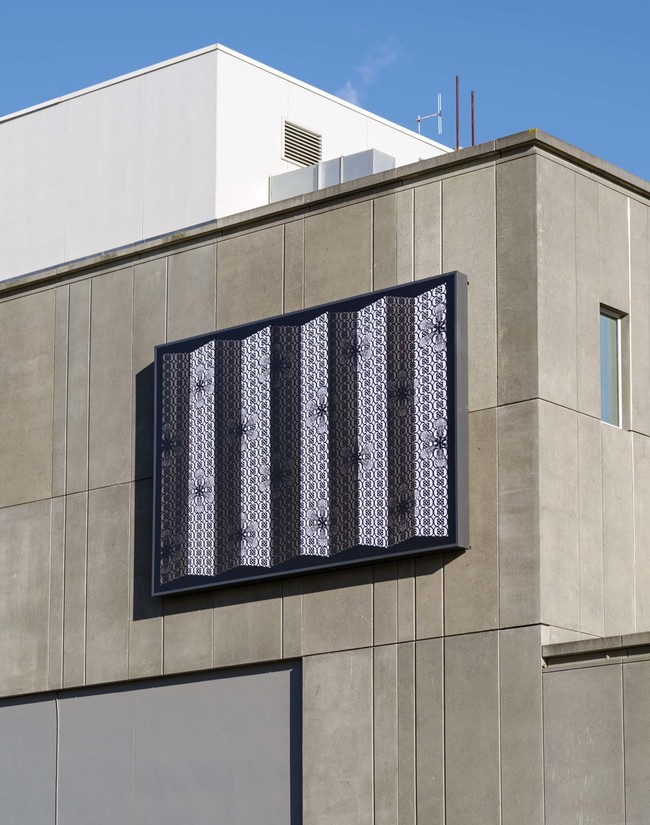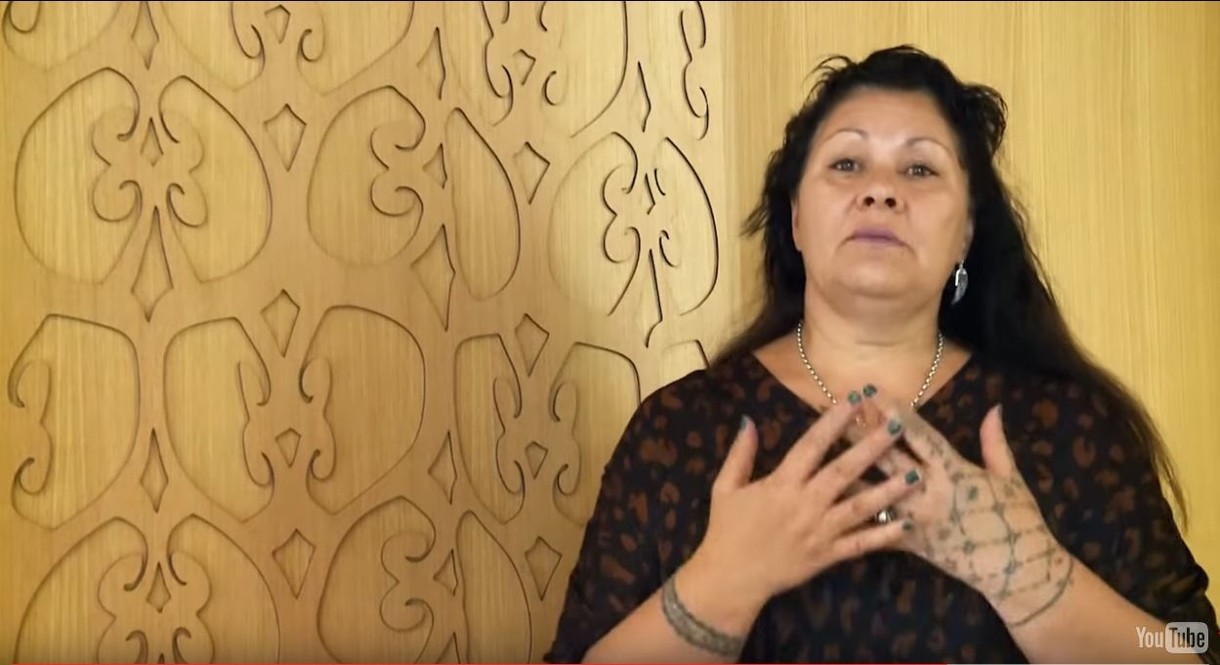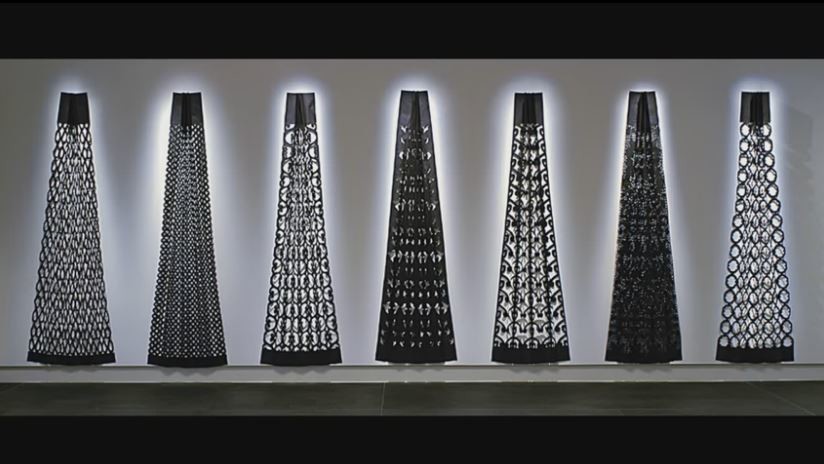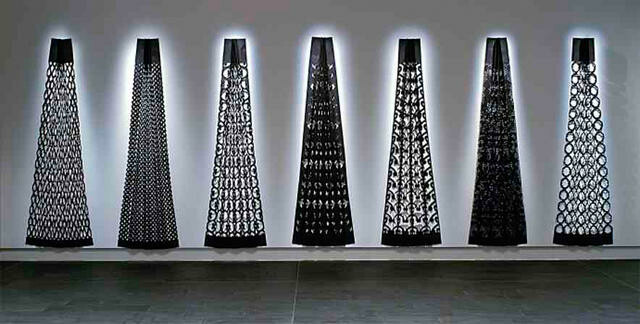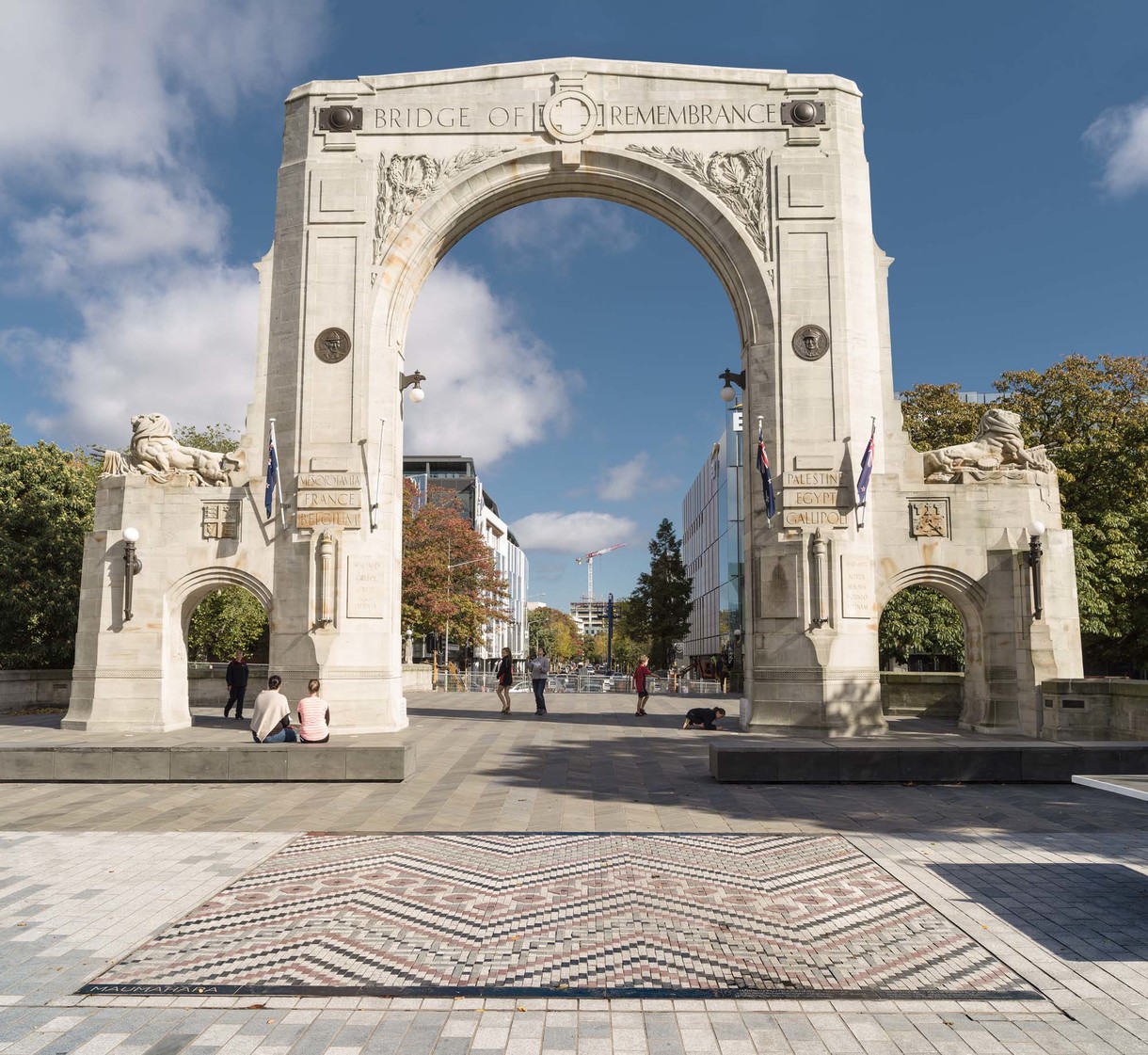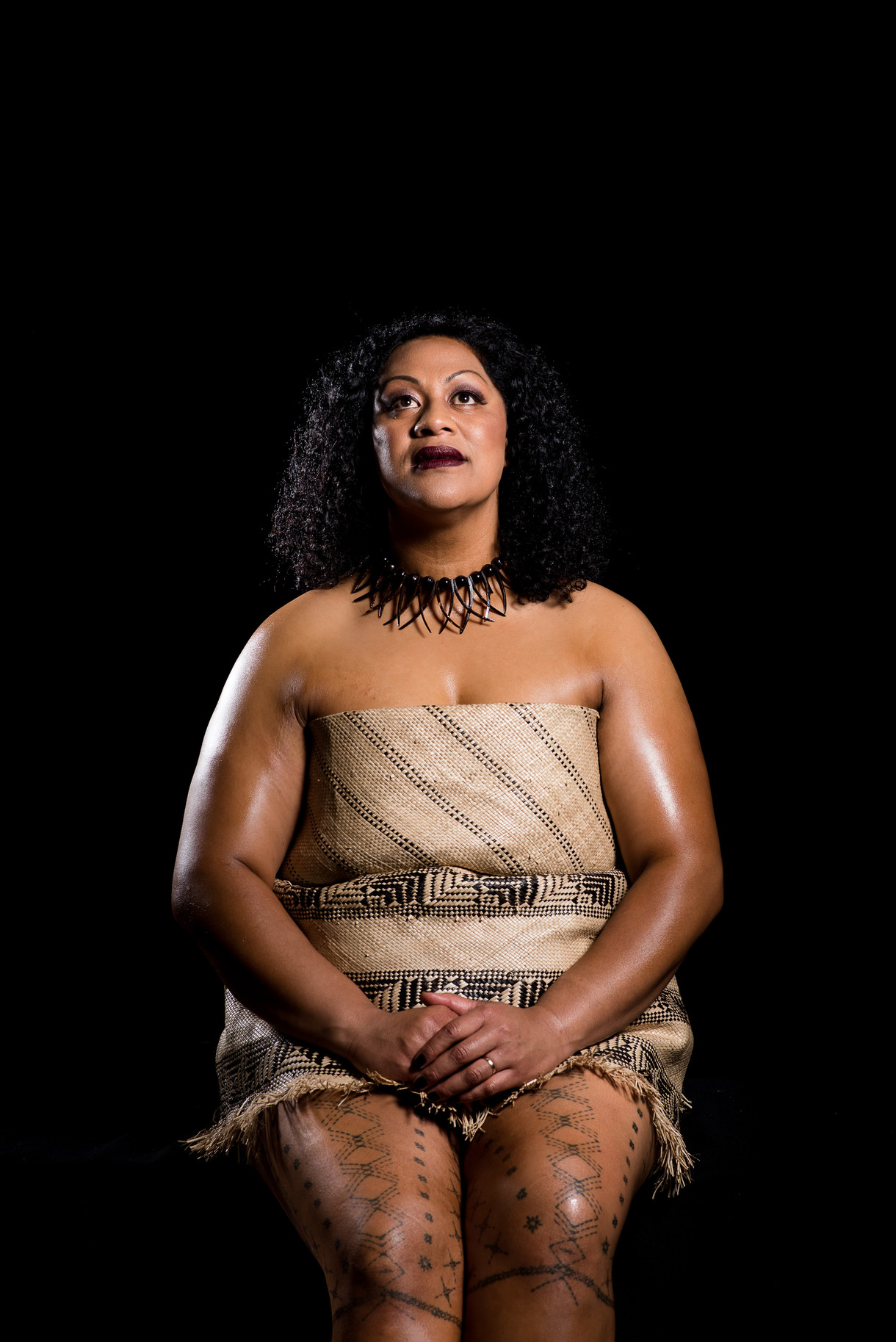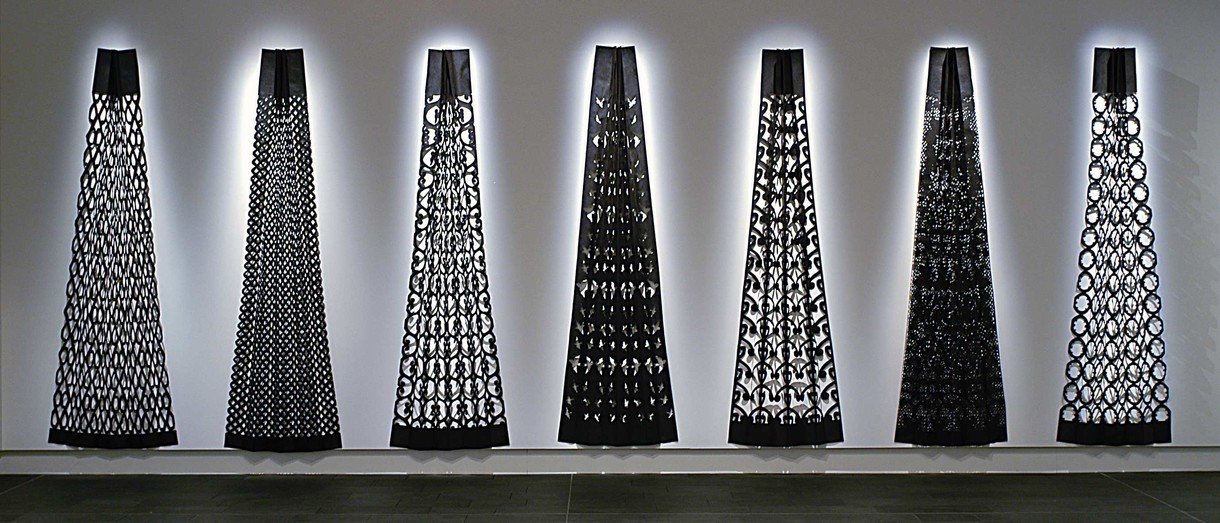Girlfriend
Lonnie Hutchinson talks to Lara Strongman about her new billboard work, commissioned for the Gallery’s Gloucester Street façade.
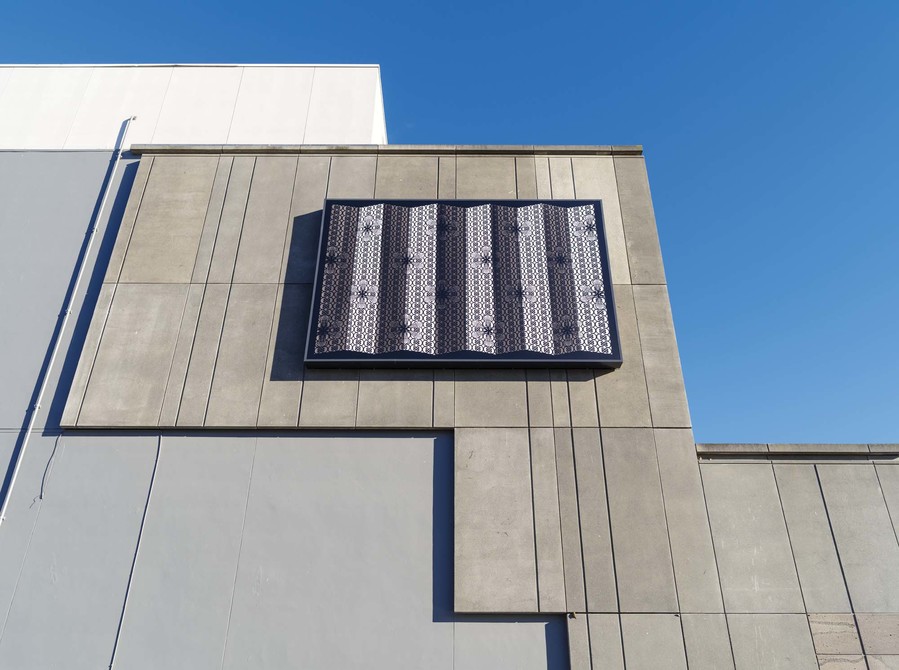
Lonnie Hutchinson Hoa Kōhine (Girlfriend) 2018. Digital print. Collection of the artist, commissioned by Christchurch Art Gallery Te Puna o Waiwhetū 2018
Lara Strongman: Why did you call this work Hoa Kōhine (Girlfriend)?
Lonnie Hutchinson: The work is very feminine in nature. Because it’s the 125 year celebration of women’s suffrage in Aotearoa this year, I wanted to refer to women, and to the friendship between women. “Girlfriend” is what women friends call each other, in an affectionate sort of way. Hey girlfriend! And in a text we’ll use gf.
LS: What’s the background to this work?
LH: It relates to most of the work that I make, in that the original motifs are cutouts. Then they’re scanned and digitised, and then I can start having some fun playing around with them. I have quite a large vector library, from all the work that I’ve made. I also have a cutout on the wall of my studio from Kahu Matarau, the cloak work I made for the Ministry of Justice. It’s on the outside of the building, and the billboard is on the outside of the Gallery building. I thought it would be nice if they could have a conversation of sorts.
I took the cutout panel I used in that work – the vector – and then I repeated it into a kind of a flower form. I was thinking of lace curtains. I read that when the first European settlers came to Christchurch over the Port Hills from Lyttelton they brought window glass with them – and some of the women brought lace curtains. A guy wouldn’t do that, it’s a female sort of thing to do, to bring a piece of home with you. In terms of Māoridom, craft practices like tāniko and muka are very similar in that the designs are very fine. Māori were also very drawn to lace fabric when it was imported.
LS: You were born and raised in Auckland, but you always feel like a person from Christchurch. We’re claiming you anyway! What is your relationship with Christchurch?
LH: I whakapapa to Kāi Tahu on my father’s side, so it’s in my bones, let’s put it that way. But specifically, I whakapapa to Kaikoura. To the north of Ōtautahi. When my son Leigh was a baby, I took him down to Christchurch because some of my Samoan family were living there, and I just kept going back and forwards. Since then I’ve developed relationships in the iwi. The funny thing was, my cousins who I used to stay with knew everyone in the tribe anyway. But I wasn’t making art then. I was being a mother, and working part-time at various jobs.
LS: I think you originally trained as a pattern cutter, didn’t you?
LH: Yes, that was my first job. I was in the sixth form. I walked into Early Bird Fashions and I got a job just like that. No CVs or anything! They trained me. I got a little job in the design room – my first year was unpicking samples from overseas.
LS: Later on you transferred the creative skills you gained as a pattern cutter to being an artist.
LH: I was always a drawer. My father was a very good drawer too. He used to make scenes out of little bits of native wood, like a fox hunt. And he used to do embroidery as well. My nana was a big knitter, and my mother was very good on the sewing machine. I grew up sewing. I made all my own clothes, so I was quite confident going into fashion. That was my first job, but I had quite a few jobs. I was a farmer for a while. My ex-husband and I went share milking to make some money. But I still kept drawing right through. I used to draw my baby, the farm, people in the family – I was always drawing. And then an opportunity came up. I was working for a screen printer, putting graphics together, and we used to hand-cut them on the lightbox in those days. Then the firm I was working for put me forward for the New Zealand screen-printing awards, and I won! Someone left a note at the exhibition, at the Aotea Centre, an interior design lecturer from Unitec, and that’s how I got into tertiary education. I ended up studying under Warren Viscoe. He was fantastic.
LS: How do you see the relationship of cutting to drawing?
LH: It’s kind of the same. You’re drawing with the blade. Except that it is also a bit like sculpture – you’re cutting, and once you’ve removed it you can’t put it back. You can’t rub it out. When I’m designing my work, I draw it first. Some things don’t work because the lines are too thin and you’ve got to thicken them up, or look at other ways of doing it. Cut-outs are quite mathematical. You’ve got to think about the weight of the paper. You don’t want to cut too much out or they become weak. If I want to make them figurative, I found I have to use more crosshatching to build strength into the negative spaces. You don’t have to worry about these things when you’re designing something that is 2D, for paper. There’s more freedom in it.
LS: Do you still cut your works by hand?
LH: Yes. It’s been suggested to me that, with the advances in technology, I should get them computer cut. But it’s not the same. You don’t get the artist’s hand in there. Not all my lines are straight.
LS: They’re very labour intensive.
LH: Yes, but you just get into the rhythm. Sometimes – I call it the factory – that’s when the factory starts. Having a talking book on is quite good for me. You get into the story, and you cut. It takes a while. It is quite labour-intensive; and I do have to watch it. I don’t cut for any longer than four hours anymore, or I start getting blisters up my forefinger.
